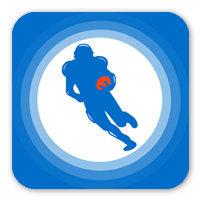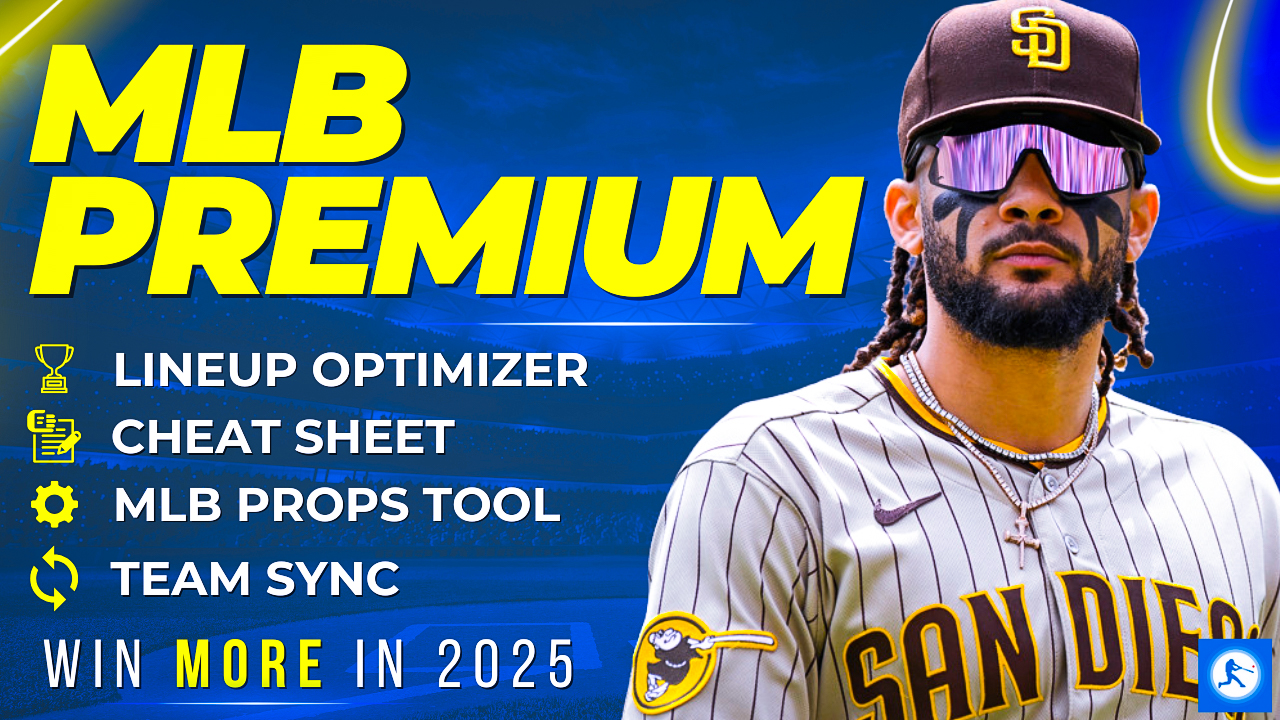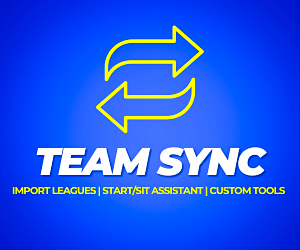Sam Chinitz reviews breakout outfielders from last season who will keep improving in 2021 for fantasy baseball.
With hitters dealing with the coronavirus pandemic and related changes to the MLB season, it’s somewhat surprising that breakouts were unexceptional (if high) in their number. After 45 qualified batters improved their wOBA by at least 0.20 points between 2018 and 2019, 54 hitters managed to do so between 2019 and 2020.
That’s not a perfect measure by which to understand breakouts by any means, but it does provide some insight into the ability of hitters to improve their surface-level stats despite the difficulties presented by the 2020 season. On that note, it’s important to point out that “breakout” is a subjective term. For this article, I’ve considered a hitter to have broken out in 2020 if they significantly improved their fantasy value relative to their most productive previous MLB season to that point (min. 50 MLB games played before 2020). That’s still a fairly broad definition, but it should help narrow down the list of hitters.
One more note before diving in. I reference estimated average bat speed and collision efficiency leaderboards in this article. All estimated average bat speed and collision efficiency (for hitters) data can be found here.
Be sure to check all of our fantasy baseball lineup tools and resources:- Fantasy baseball trade analyzer
- BvP matchups data (Batter vs. Pitcher)
- PvB matchups data (Pitcher vs. Batter)
- Who should I start? Fantasy baseball comparisons
- Daily MLB starting lineups
- Fantasy baseball closer depth charts
- Fantasy Baseball live scoreboard
- Fantasy baseball injury reports
Methodology
To understand which players are going to maintain and improve upon their breakout 2020 seasons, it’s important to separate the noise from the hitters who made underlying skill changes that drove their improved performance. To that end, I’ve broken down the three primary surface-level drivers of hitter breakouts (hitting the ball harder, hitting the ball with more desirable launch angles, and improving their strikeout and walk rates) and examined the best metrics to track the skill-based changes underlying those surface-level improvements.
Hitting the Ball Harder
There are two ways for a hitter to improve their exit velocities: improved bat speed and improved collision efficiency. Bat speed is fairly self-explanatory and represents the speed of the bat at the point of contact, while collision efficiency is a measure of the energy lost to the vibration of the bat on contact, essentially measuring how much energy actually contributes to the ball’s exit speed off of the bat. Collision efficiency is determined by the horizontal point on the bat where contact is made; contact made closer to the bat’s “sweet spot” will have higher collision efficiencies, while contact made closer to the ends of the bat will have lower collision efficiencies. Thanks to research done by Dr. Alan Nathan, we know that the range of collision efficiencies for a standard MLB wooden bat should be about -0.2 to 0.2.
MLB doesn’t provide public data for either of those metrics, but I’ve estimated each of them to get a better idea of which is a better indicator of hitter skill. To estimate bat speed, I used a barrels-only approach that’s similar to one Driveline has used in the past. The barrels-only approach takes only the subset of a hitter’s batted balls that Statcast considers to be barrels and assigns those balls a collision efficiency of 0.2 since it’s likely that those balls were hit close to the bat’s sweet spot. Assuming that the pitch’s speed at the point of contact is 10% slower than its speed when released from the pitcher’s hand (an assumption that Dr. Nathan has made in related research), bat speed can be calculated using the following formula:
b = (l - p*q)/(q+1)
Where:
- b is bat speed
- l is launch speed (in this context, this is effectively the batted ball's exit velocity)
- p is the pitch speed at the point of contact
- q is collision efficiency
The resulting estimated bat speeds were then averaged for each hitter to determine each hitter’s average bat speed. To estimate collision efficiency, I applied each hitter’s average bat speed as the bat speed for each of their balls in play. With bat speed, pitch speed, and exit speed now all known or estimated values, collision efficiency was estimated using the following formula:
q = (l-b)/(b+p)
These aren’t perfect estimates. Estimated average bat speed is probably a little high because it relies on barrels, as hitters likely post higher bat speeds on barrels than on their other balls in play. Relatedly, bat speeds are not constant in real life, affecting the accuracy of the collision efficiency estimate. Still, both estimates pass important smell tests and are built upon other sound research, and I’m comfortable using the estimates for analysis as a result.
One smell-test-style example for bat speed is a look at the 2015-2020 bat speed leaderboard. The leaderboard yields few significant surprises and generally aligns with what should be expected from a bat speed leaderboard -- a good sign for the estimate’s accuracy.
| Player Name | Year | Average Estimated Bat Speed |
| Giancarlo Stanton | 2020 | 80.05 |
| Franchy Cordero | 2018 | 79.29 |
| Giancarlo Stanton | 2019 | 79.23 |
| Giancarlo Stanton | 2017 | 79.18 |
| Giancarlo Stanton | 2015 | 79.12 |
| Giancarlo Stanton | 2018 | 78.85 |
| Giancarlo Stanton | 2016 | 78.25 |
| Aaron Judge | 2017 | 78.16 |
| Joey Gallo | 2019 | 78.07 |
| Jonathan Schoop | 2020 | 78.06 |
| Mac Williamson | 2016 | 77.78 |
| Rowdy Tellez | 2020 | 77.73 |
| Jorge Alfaro | 2017 | 77.71 |
| Gary Sanchez | 2019 | 77.69 |
| Joey Gallo | 2018 | 77.68 |
To test whether or not the collision efficiency estimates are reasonable, I examined the distribution of estimated collision efficiencies of a 1776 batted ball sample to see if the values were within the -0.2 to 0.2 range that Dr. Nathan established.

With roughly 90% of the estimated collision efficiencies falling in the expected range, the collision efficiency estimates appear to be reasonably accurate. So, is collision efficiency or bat speed a better indicator of hitter skill?
I hypothesized that pitchers might have some significant control over collision efficiency back in December, and that hypothesis has held up under further investigation. Having attempted to model the collision efficiency of a batted ball based on a lengthy but non-exhaustive list of variables, I’ve found that horizontal pitch location (specifically, the pitch’s horizontal distance from the center of the strike zone) is by far the most significant predictor of a batted ball’s collision efficiency. Additionally, collision efficiency isn’t particularly sticky for hitters from season to season*.
In contrast, bat speed is fairly sticky from season to season for hitters. It’s also easy to assume that bat speed is completely in hitter control because of the nature of the stat, although research from Rob Arthur combined with my own analysis makes me hesitant to declare bat speed as 100% hitter-controlled.
Still, bat speed is almost certainly dominated by the hitter while collision efficiency is (at least) likely to be somewhat significantly affected by pitchers. As a result, I’ll consider hitters with exit-velocity-driven breakouts to be stickier breakouts if they saw corresponding improvements in their bat speed.
Improved Launch Angles
Launch angle changes are reasonably common breakout drivers, with notable players like Christian Yelich benefiting from such adjustments. There are two primary ways for hitters to improve their launch angles.
One way for a hitter to improve their launch angles is by shifting the distribution of their launch angles so that more of their batted balls come with desirable launch angles. The other way for a hitter to improve their average launch angles is by tightening the distribution of their launch angles so that more of their batted balls come with desirable launch angles. The former can be measured by taking a hitter’s average launch angle, and the latter can be measured by taking the standard deviation of a hitter’s launch angle**. I examined hitters who improved their launch angles by both means for this article.
Since this article is focused on finding players who made underlying adjustments that fueled their breakouts, I went deeper than just calling out hitters who improved their launch angles, though. To that end, I focused on hitters who both improved their launch angles and underwent a documented swing change.
Better Strikeout and Walk Rates
Improved strikeout and walk rates are built on skills that are difficult to measure directly with publicly available data. For example, pitch recognition is a crucial skill for hitters that directly affects their strikeout and walk rates but is not readily trackable.
Fortunately, strikeout rate stabilizes after only about 15 games for hitters, so the 60-game season should provide a decent amount of information for most hitters about their underlying strikeout-related skill changes. A hitter’s walk rate takes twice as long to stabilize as their strikeout rate does, though, and I’m not as confident in using walk rates for this article as a result.
Of course, that doesn’t mean that hitters who benefited from elevated walk rates in 2020 won’t continue to improve in 2021. Hitters who broke out in part because of improved strikeout rates are more likely to continue improving in 2021 compared to those who improved because of improved walk rates, though, so I focused on the strikeout-based breakout hitters in this article.
Bat Speed Breakouts
For context, the average estimated average bat speed change from season to season is effectively 0 mph based on data from 2015 through 2020. Season-to-season changes in estimated average bat speed are well-approximated by a normal distribution, and the standard deviation of the distribution is 1.13 mph. Two breakout outfielders with power-driven 2020 breakouts who posted significant estimated average bat speed gains were Jesse Winker and Trent Grisham.
Jesse Winker
Winker enjoyed the best offensive season of his career in 2020 with a .932 OPS through 54 games, and his success came with encouraging power output and bat speed improvements. On the power output front, Winker rode career-highs in hard-hit rate (49%) and average exit velocity (92.1 mph) to a stellar .454 xwOBAcon that helped offset a relatively high 25.1% strikeout rate.
Importantly, that improved output was paired with a 1.8 mph increase in Winker’s estimated average bat speed, good for the 12th best mark in 2020. Fantasy managers should expect Winker to largely maintain his power breakout in 2021 as a result, making him likely to build off of his excellent 2020 season this year.
Grisham saw his OPS jump 70 points between 2019 and 2020, and his overall improvements were largely power-dependent as his hard-hit rate jumped seven points and his xwOBAcon rose by 69 points. Notably, Grisham’s power improvements were well-supported by a 1.77 mph increase in his estimated average bat speed that ranked just behind Winker’s mark for the 13th largest increase between 2019 and 2020.
Grisham’s elevated estimated average bat speed should excite fantasy managers, and it provides him with both a higher floor and ceiling for 2021 relative to 2020. That makes Grisham an attractive target at his 65 ADP, and fantasy managers should keep it in mind heading into drafts.
Launch Angle Breakouts
There are two wrinkles regarding launch angle data that are important to note. For one, all launch angle data was retrieved from Alex Chamberlain’s pitch leaderboard, so some of the data referenced might be slightly different from what is displayed on Baseball Savant.
Secondly, MLB’s switch to HawkEye for batted ball tracking in 2020 affected the available launch angle data. To account for HawkEye’s effects, I compared each hitter’s average launch angle and launch angle standard deviation to the league averages in those metrics for each season. With that in mind, below are two hitters whose breakouts were significantly driven by improved launch angles in 2020 and who underwent documented swing changes.
Myers paired the fifth-biggest improvement in launch angle standard deviation with a substantial increase in his average launch angle in 2020, contributing significantly to his breakout campaign. Indeed, Myers posted a career-best 14.8% barrel rate in 2020, helping fuel his impressive .482 xwOBAcon.
Encouragingly, Myers’ improvements came with a dramatic swing adjustment that had a clear impact on his launch angle. Fantasy managers should expect Myers’ launch angle improvements to largely stick in 2021 as a result, and he has a chance to continue improving as well.
Slater saw one of the largest increases in his average launch angle in 2020, resulting in the slashing of his ground-ball rate from 52.3% in 2019 to 39.7% last season. Slater’s xwOBAcon increased 26 points to .458 in large part because of his elevated launch angle, playing a crucial role in his strong season.
Besides a late-season slump exacerbated by a small sample size, Slater’s improved launch angle can be traced back to the middle of the 2019 season when he made a key swing adjustment targeted at lowering his ground-ball rate. Slater also improved his strikeout rate by more than nine points in 2020, further bolstering his chances of improving again in 2021. Fantasy managers should be optimistic about Slater’s chances of continued improvement in 2021 as a result.
Strikeout Rate Breakouts
There’s a case to be made that Anthony Santander belongs in this group, but I’m skeptical of his ability to maintain and continue to improve upon his 2020 season after he posted a mediocre .338 xwOBA and an elevated launch angle that came without a swing change. As a result, Santander is not a fit for this article. Teoscar Hernandez, however, is.
Teoscar Hernandez
It might be a bit of a reach to put Hernandez in this category, but Hernandez’s relatively low strikeout rate played a key role in his 2020 success. Although Hernandez’s 30.4% strikeout rate in 2020 still wasn’t great, it was his best mark since 2016 (when he made his major-league debut and played in 41 MLB games) and a 2.6-point decrease from 2019. That change represents a big step forward for Hernandez and makes it relatively likely that he continues to improve in 2021.
A lower strikeout rate isn’t the only reason why Hernandez is likely to continue improving in 2021, though. Hernandez actually shows up in all three categories discussed in this article, as he boasted the second-biggest improvement in launch angle standard deviation and a fairly high 1.55 mph increase in his estimated average bat speed. It should come as no surprise, then, that Hernandez saw significant jumps in his barrel rate and xwOBAcon in addition to his improved strikeout rate. This analysis is a rousing endorsement of Hernandez’s ability to maintain and improve upon his breakout 2020 season in 2021 as a result, and fantasy managers should consider that when drafting.
*It’s worth noting that collision efficiency is even less sticky for pitchers from season to season, but pitchers (as a group) also show no tendency to locate their pitches in similar horizontal locations from season to season. Stickiness (or a lack of it) doesn’t necessarily indicate control, but it remains a data point in favor of pitcher control over collision efficiency based on this data.
**This is true for bat speed as well, but because the bat speed estimate used can only be used as an average, I’ve only focused on hitters with average bat speed improvements.
Download Our Free News & Alerts Mobile App
Like what you see? Download our updated fantasy baseball app for iPhone and Android with 24x7 player news, injury alerts, sleepers, prospects & more. All free!

More Fantasy Baseball Advice





 RADIO
RADIO


























